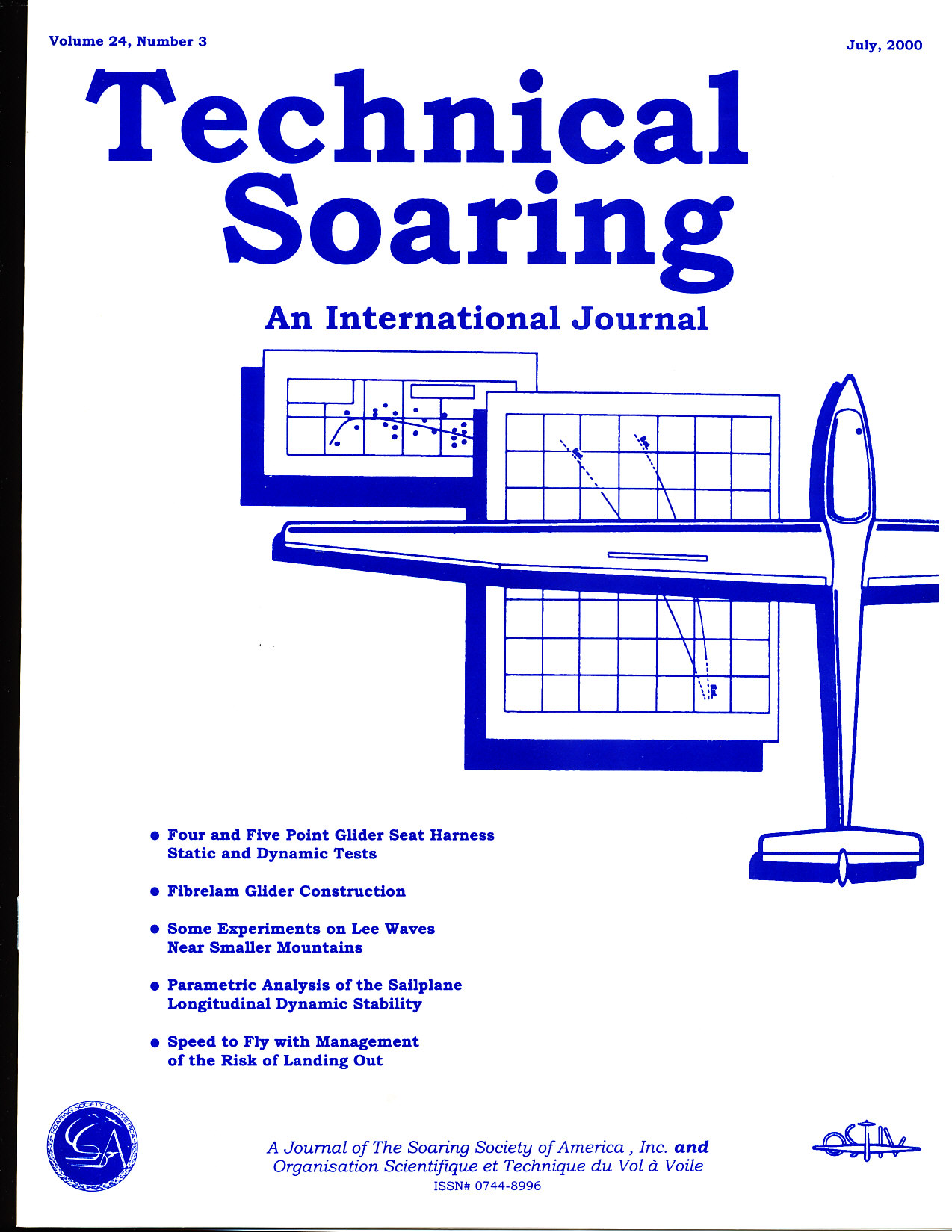SPEED TO FLY WITH MANAGEMENT OF THE RISK OF LANDING OUT
Keywords:
Meteorology, Training and Safety, CoachingAbstract
This paper describes a theory of glider cross-country soaring. The greatest contribution on this subject is the MacCready theory. But in modern soaring techinuqe, many glider pilois choose to set a slower speed than derived from MacCieady theory. That is to use a low Ring Setting. Flying at lower speed and higher L/D allows searching over a wider range to select better thermals, and to improve mean speed. Experience has shown that the selection of thermais to use or ignore is as important as the selection of inter-thermal speed. In this paper, best speed to glide, weakest thermals to use and oplimum cloud chasing rules are computed based on the meteorolory of a given soaring day and a pilot selected level of risk of landing-out. The mathematics underlying the stochastic decisions are shown. A stratery to get the best score at competitions is presented.Downloads
Published
2013-10-09
Issue
Section
Articles
License
CLEARANCE AND LICENSE TO PUBLISH:
This paper is UNCLASSIFIED (for public reasons) and has been cleared by the appropriate agencies, company and government. This paper represents original work by the author(s). No portion of the material is covered by a prior copyright; or for any portion copyrighted, the author has obtained permission for its use.
I hereby license OSTIV to publish this paper and to use it for all of OSTIV's current and future publications uses.


